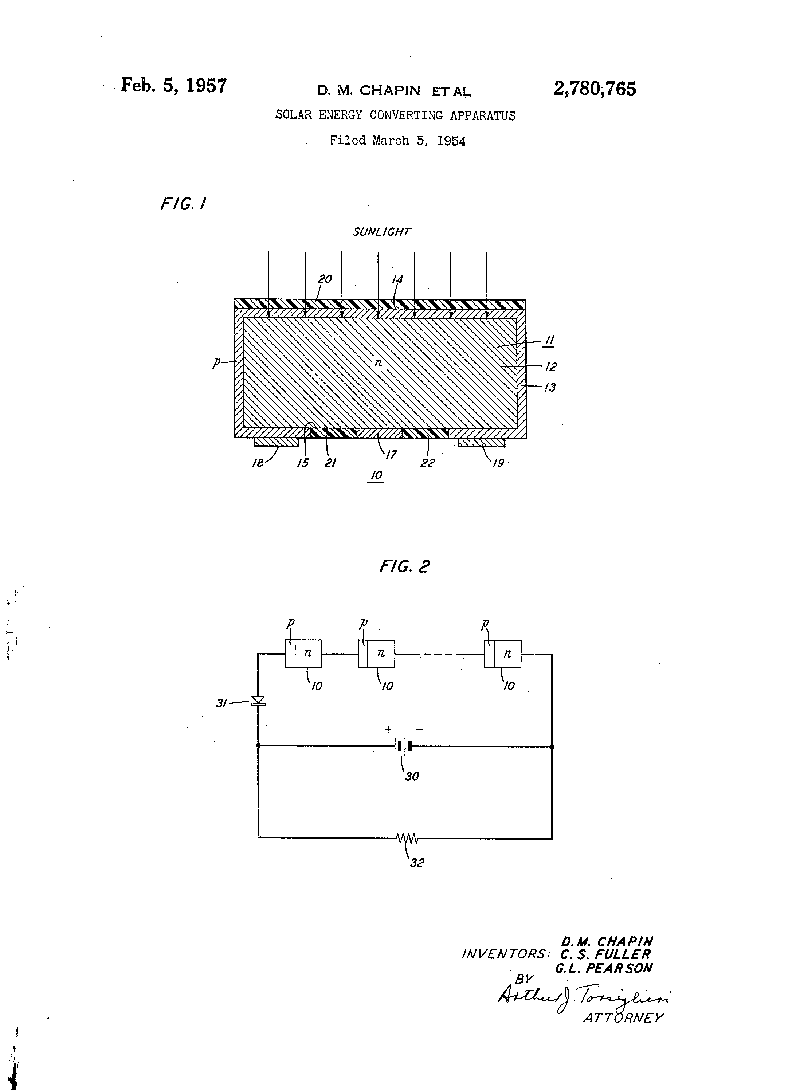Weak sauce energy bill signed in Minnesota – On Friday Minnesota Governor Tim Walz signed into law the omnibus jobs, economic development, commerce and energy bill (SF 2), which notably does not contain the 100% clean energy mandate which was found in the House version of the bill.
Other features were also removed by the Minnesota Senate, but the bill still contains provisions directing public utilities in the state to look at energy storage in their long-term planning, and allowing Commercial Property Assessed Clean Energy (C-PACE) financing to be used in new construction.
Our take: The gutting of the clean energy mandate in this bill by the Republican-controlled Senate reinforces the trend that no 100% clean energy mandate has ever passed when the Republican Party controls either chamber of a state legislature or the governor’s office.
Source: Clean Energy Economy Minnesota
A brief history of solar panels: A brief history of solar power patents in mostly the USA from the 1800s through SolarCity, including: “By the 1950s, Bell Laboratories realized that semiconducting materials such as silicon were more efficient than selenium. They managed to create a solar cell that was 6 percent efficient. Inventors Daryl Chapin, Calvin Fuller, and Gerald Pearson (inducted to the National Inventors Hall of Fame in 2008) were the brains behind the silicon solar cell at Bell Labs. While it was considered the first practical device for converting solar energy to electricity, it was still cost prohibitive for most people.” Source – Smithsonian

Solar PV (minus) heat desalinates water and heats homes: 1st project – “Photovoltaic (PV) systems such as solar arrays get hot, and the team has developed a way to pull heat from the solar cells using aluminum minichannels —made cheap by the automotive industry — and have replaced the typical PV module packaging with an inexpensive non-imaging optic. 2nd project: The second project, supported by a grant from the U.S. Department of Energy’s Solar Energy Office, is a portable water purification unit that harnesses solar power for 24/7 operation.” – Source – UC Merced
Clarksville, first city in Arkansas, going 100% municipal solar: “City-owned utility Clarksville Connected Utilities announced Wednesday (May 29) it’s working with solar power developer Scenic Hill Solar of North Little Rock to build a 2.86-megawatt (MW) solar power plant. The plant is expected to start operating by the fourth quarter of 2019. The city previously partnered with Scenic Hill Solar to build a 6.5-megawatt solar power plant in 2017, and the plant has been generating electricity for 18 months, said John Lester, general manager of Clarksville Connected Utilities.” Source – Talk Business
Some data today on copper being used in solar power, plus if you go to the site they show it broadly in cleaner energy technologies – Source Visual Capitalist

Google backed group seeks to derive real time global emissions from space – “The images will be processed by various algorithms to detect signs of emissions. It has already been demonstrated that a great deal of pollution can be tracked simply through identifying visible smoke. WattTime says it can also use infrared imaging to identify heat from smokestack plumes or cooling-water discharge. Sensors that can directly track NO2 emissions are in development, according to WattTime executive director Gavin McCormick. Between visible smoke, heat, and NO2, WattTime will be able to derive exact, real-time emissions information, including information on carbon emissions, for every power plant in the world.” Source – VOX
Medical bus with solar powered facilities from Geisinger: “The onboard solar power system consists of 10 solar panels and lithium ion batteries able to sustain clinic operations almost indefinitely. Most mobile clinics rely on an onboard generator to power their clinics that is noisy and distracting. The solar system is not only environmentally friendly, but has no sound, creating an environment much more conducive for patient care. Ten solar panels are constantly charging on the bus roof. They charge six lithium ion batteries that power the bus and utilities on the bus, she said. There is also a generator as a back-up.” Source – Daily Item
The solar module supply chain seemed stable last week, as raw polysilicon, cells, wafers, module and glass seemed to stay mostly stable.
https://twitter.com/PvInfolink/status/1133683176340017153
This content is protected by copyright and may not be reused. If you want to cooperate with us and would like to reuse some of our content, please contact: editors@pv-magazine.com.









Colorado passed a couple of laws recently – one on house building efficiency and one on appliance efficiency. Every vote against it was from an R. The house building efficiency bill was pretty weak – IF a district updates its building standards it must adopt one of the last three standards from which ever group does building standards (I have forgotten which group). Colorado is a state that lets counties and cities set their own standards for buildings. So, even this weak version the Rs were against.